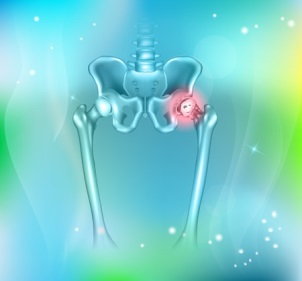Dr. Troy Dreiling provides chiropractic care for your hip pain. Located near Andresen and Fourth Plain Blvd in Vancouver, Wa, you can quickly schedule a free consultation by calling the office. Voted Clark County’s top chiropractor!
 Hip pain can be a very debilitating issue to have to deal with on a daily basis. Because the hips control a majority of the functions you do on a daily basis, including sitting, standing, walking, and performing any type of activity, this type of pain can make day-to-day living very difficult. Because of the use that your hip gets, it also makes hip pain very hard to minimize as the more it gets used, the more aggravated it becomes and the worse the pain gets. Pain in the hip area can be a direct result from an injury or illness, or it might be a signal that something else is wrong in the body.
Hip pain can be a very debilitating issue to have to deal with on a daily basis. Because the hips control a majority of the functions you do on a daily basis, including sitting, standing, walking, and performing any type of activity, this type of pain can make day-to-day living very difficult. Because of the use that your hip gets, it also makes hip pain very hard to minimize as the more it gets used, the more aggravated it becomes and the worse the pain gets. Pain in the hip area can be a direct result from an injury or illness, or it might be a signal that something else is wrong in the body.
Types of Hip Injuries
The ways the hip can be injured varies greatly; some are bad enough to warrant surgery, such as a broken hip. Other injuries, however can often be treated with milder treatment options. These injuries include:
- Injuries from overuse – The hip, while sturdy, can be worn down over time. If you do the same activity over and over again, it could eventually wear the joint down. This, in turn, causes the surrounding muscles to become inflamed, resulting in serious pain. You might start to notice small twinges of pain here and there, but have full-blown hip pain after several weeks if the activity is not stopped.
- Bursitis – This condition occurs when the sacs filled with fluid in the hip become inflamed. The sacs get in the way of the hip bone and the surrounding tendons, causing sensitivity and eventual pain. The pain might radiate down to the thigh along with causing pain in the hip as the swelling worsens.
- Osteoarthritis – As you age, it is normal to begin to lose cartilage around the joints. This results in degeneration of the joint itself, which reduces your ability to do things and is called osteoarthritis. It is not the only type of arthritis you can experience in the hip joint, but it is the most common. Osteoarthritis can be very painful, especially when the cartilage completely wears away, leaving the bone exposed.
- Injuries – There are many ways that you can injure your hip. You might simply strain a muscle or completely break a bone that makes up the hip joint. Even a strained muscle can be debilitating as it puts stress on the other muscles and ligaments in the area to take over the strained area.
Diagnosing Hip Injuries and Treatment
To determine the reason for your hip pain, the doctor will perform a physical exam, which includes an analysis of your walk, range of motion, muscle strength in the area, the strength in your back, and the condition of your legs. If further evaluation is desired, you may have to undergo medical imaging to determine the reason for the pain. Depending on the assumptions made during the physical exam, you will likely undergo either:
- Standard x-rays
- CT scans
- MRI
X-rays are suitable for issues with the bone or other easy to see areas, while issues that require a closer look at soft tissues or certain areas in detail require a CT scan or MRI. In rare cases, the hip is injected with a steroid to determine if relief is obtained – this helps to isolate the problem to the hip, rather than other surrounding areas, including the lower abdomen.
Treatment varies depending on the reason for your hip pain. If inflammation is the cause, anti-inflammatory medications are typically prescribed. Other treatment options include the injection of a corticosteroid, exercises to stretch and strengthen the area, and surgery, including a total hip replacement if the damage from arthritis or a hip fracture is severe.
How Chiropractic Care Can Help
Chiropractic treatment for hip pain is very beneficial because it focuses on the reason for the pain, not just a quick fix to help you go about your normal activities. The chiropractic exam entails a full work-up of your medical history, family history, and a physical examination to determine where the pain is coming from as it is not always strictly from the hip itself. Once the source of the pain is determined, a treatment plan can be put together to heal the problem. Sometimes the problem is found to be in the spine itself, such as a pinched nerve, while other times it is one of the injuries/illnesses described above. Based on the findings of the exam, the appropriate treatment plan is put together.
The type of treatment necessary for your pain and/or illness depends on its severity as well as the reason for it. If there is swelling, chiropractic treatment can help to decrease it; if there is a loss of flexibility, there are ways the chiropractor can help to get the area mobile again. The key is listening to the chiropractor and his advice as he will likely provide nutritional, activity level, and exercise advice. In the office you will likely undergo one of the following types of treatment:
- Massage
- Stretching
- Spinal adjustments
- Manipulation of the affected areas
- Ultrasound treatment
In addition, chiropractors can show you specific exercises to do at home to help speed up the healing process. Even the best chiropractic treatment in the office will not be successful if you do not keep up the treatment at home. The exercises are meant to help you stretch and strengthen the area in between appointments so that you do not get stiff and begin to suffer from pain again. In the end, you will be more stable and flexible, enabling you to have long-term use out of your hip that might otherwise have deteriorated because of a lack of range of motion and the accumulation of adhesions.
Hip Pain FAQ
How can I prevent hip pain?
Hip pain can be debilitating, but with a few simple changes at home, you can help to minimize your risk:
- Always stretch before exercising or performing heavy activity
- Take a rest when you feel any degree of pain in your hip
- Wear supportive shoes to give your hips the support they need
- Maintain proper weight to avoid excessive strain on the hips
Summary
Chiropractic treatment for hip pain can be the perfect treatment on its own or the perfect accompaniment to traditional treatment, such as surgery. It is also a great way to help prevent future flare ups or issues with your hip. By keeping your entire body perfectly adjusted and subluxations to a minimum, you may experience less hip pain and more enjoyment in life.
Call us for your free consultation for your hip pain today!
Please excuse the hiccups!
Transcription
Hey, it’s Dr. Troy here at Zenaptic Chiropractic.
Today I want to talk about hip pain. How we take care of that, how we fix that.
Many people suffer from hip pain. A lot of people are sitting they’re in a flexed position and so the hip flexors will get tight. One of the things you’ll see too especially in the spine, if the bones get out of alignment they can actually cause the pelvis to twist and torque which is going to create tension on the hip muscles which eventually can cause hip pain because of the imbalance.
So the first thing we want to look at is is there a structural component to this? Is there misalignment that’s affecting the way the hips are functioning and moving? That’s the first we want to assess.
There’s a series of things we can do. Spinal adjustments can help increase the flexibility that tone to the nerves. And then there’s certain exercises that you can do, certain things like yoga moves there’s some foundational exercises, foam rolling works really good.
A lot of times we’ll see people who have hip pain will have leg pain or they’ll have a leg tightness they’ll have calf tightness and so these things need to be addressed to help reduce the effect on the hip socket, the hip muscles and the energy that’s around those.
So if you’re interested in getting checked out to see if chiropractic can help with hip pain (360) 260-6903 is our number. Any of our doctors in the office would be happy to take a look at you to see if we can help you.


